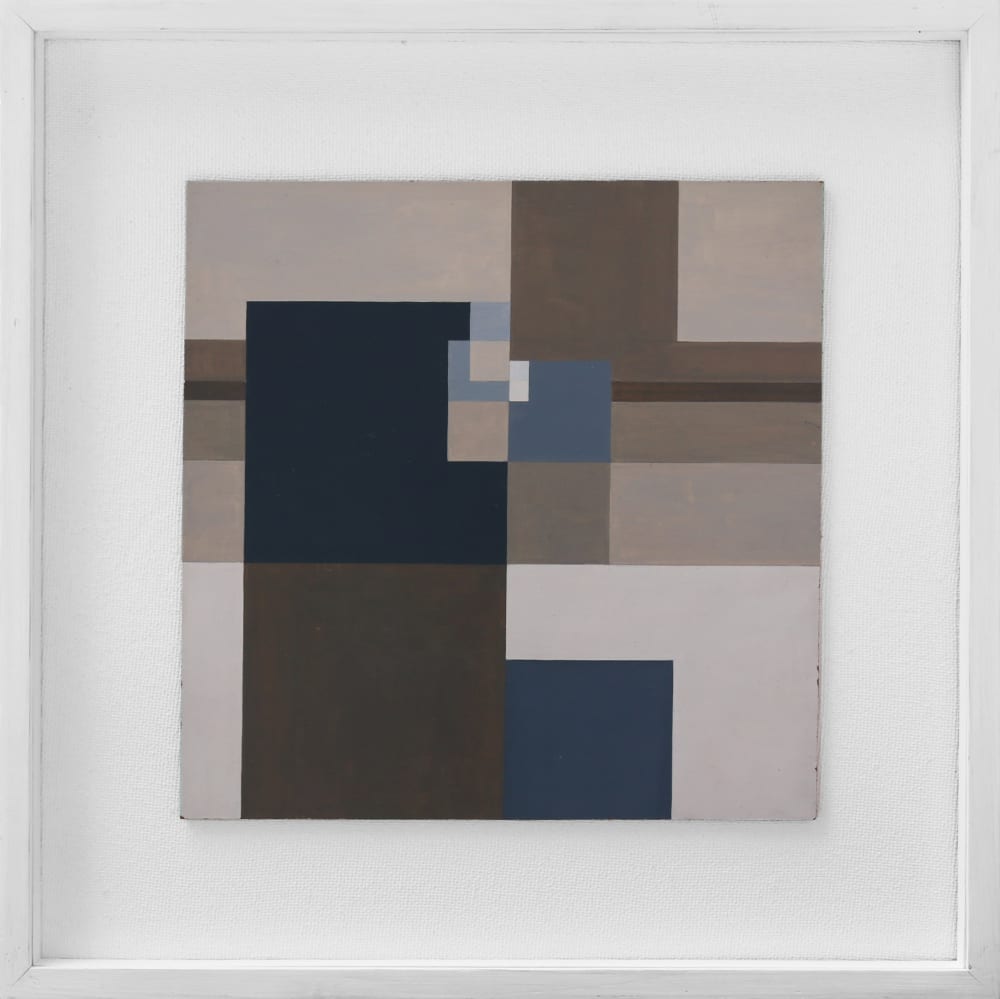
Blue and Brown Composition
Michael Canney 1923-1999
Framed: 45.6 x 45.6 cm (18.0 x 18.0 ins)
Provenance
Artist's estate
Publications
Online at www.michaelcanney.co.uk – within Late Abstracts. © The estate of Michael Canney 2010
‘Blue and Brown Composition’ is executed in fast drying alkyd oil paint which Canney started to use in 1981 to give greater precision of line and clarity of colour than had been possible in his earlier works. As Robert Miller wrote in his introduction to the catalogue for a posthumous Fine Art Society exhibition of Canney’s work in 2007, it is a paint type “which would transform the variety and appearance of his pictures. His discovery and experimentation with alkyd allowed his vision and thoughts to come to fruition in a burst of creativity… Alkyd, or alkyd oil paint, contains a resin which means that the medium dries quickly, or more accurately ‘sets’ or hardens. This happens in a matter of hours and allows blocks of colour to be laid down adjacent to each other without any danger of ‘run’ or mixing”.
In an article for “Constructivist Forum”, issue 8, 1988, Canney provided a wonderful insight into these later works: “My work since 1970 has been mainly concerned with investigations of the square, exploring the formal possibilities offered by this stable, basic and non-referential shape. Although I have at times used a modular format or grid, I am by temperament drawn towards a more dynamic approach, in which a de-stabilisation of the square occurs through diagonal and oblique divisions of the surface.
Amongst the many procedures investigated, cuts and folding of the square have suggested the option of low-relief, of shape reversal, inversion, shearing and above all, a reassembly of the parts within a logical, systematic, or mathematical framework. Musical analogies occur in the form of mirror images, inversions, contrapuntal movements, and variations on a theme.
The above rearrangements of the square tend to avoid decisions which are random or dictated by taste, and the works are therefore in a sense systematic. Although structural demands and a desire for consistency are paramount, where colour and surface texture are concerned, taste and suitability usually play some part in the decisions taken. I am not, however, averse to using colour in a systematic way, a method that for me has led to new and surprising discoveries in the field of colour”.






